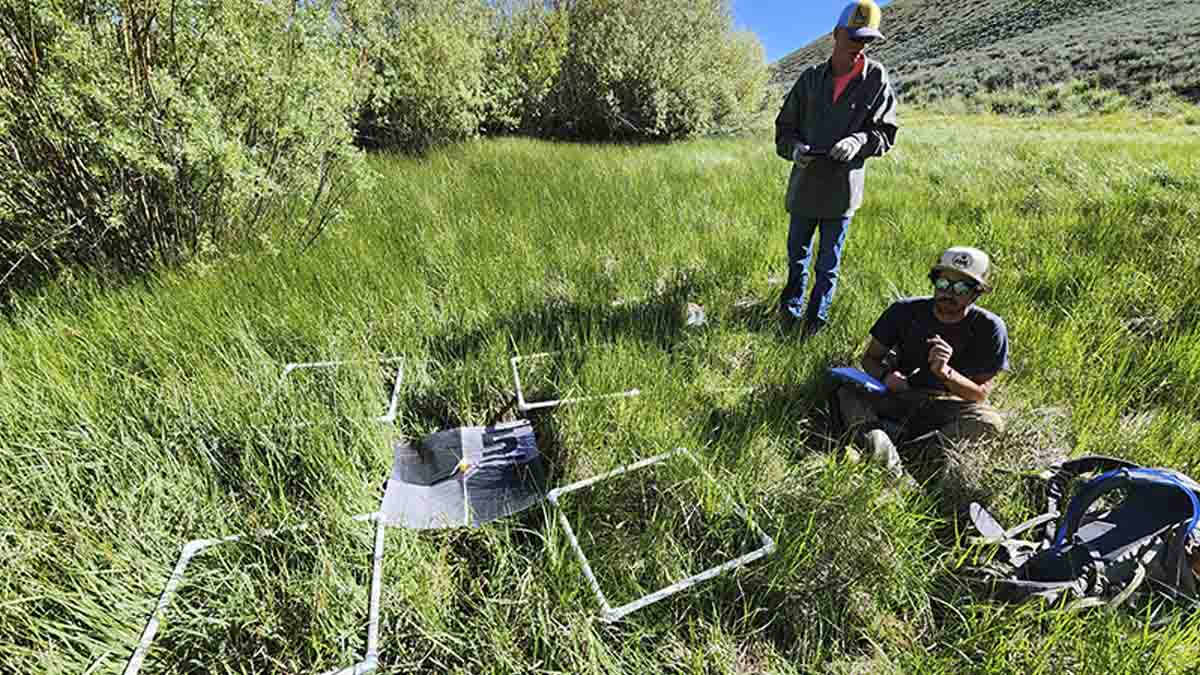Researchers Study Early Grazing
August 07, 2024
University of Idaho researchers are studying if grazing riparian meadows earlier in the season than normal could provide ranchers with extra forage while also sequestering more soil carbon and bolstering vegetation regrowth.
Ranchers typically wait until the ground is firm and plants reach a minimum height, known as range readiness, before turning cattle loose within meadows to avoid compacting the soil and trampling the grasses, shrubs and forbs.
Eric Winford, associate director of U of I’s Rangeland Center, and Laurel Lynch, an assistant professor in the Department of Soil and Water Systems, hypothesize that grazing meadows a few weeks earlier for a short duration of time and at a moderate density could improve long-term soil and plant health. They’re in the first year of a planned multi-year study testing the theory at U of I’s Rinker Rock Creek Ranch in the Wood River Valley. The initial season of the project is funded with $9,000 from the David Little Range Livestock Endowment.
The study was recommended by ranchers who serve on the Rinker Rock Creek Ranch Advisory Board, seeking to shorten the timeframe when they must feed hay to their livestock.
“The question is, can we turn cattle on meadows a bit earlier, taking advantage of the early green-up on meadows — which has a little bit more moisture and is a little bit more nutritious and palatable — and not do any harm to the soils and the plant health,” Winford said. “The committee wanted to understand what changes would happen below ground and above ground if we did turn out these cows early in these meadows.”
The experiment’s initial phase entailed early grazing a herd of 75 cows, moving them through three 100-acre meadows along Rock Creek from early May through early June. Half of each meadow was left ungrazed as a controlled check. The researchers took soil samples before and after grazing, recorded the height of vegetation to estimate utilization, and flew drones to evaluate vegetation composition and productivity. They hope to expand the research to include additional sites in future years.
Lynch will analyze the soil samples. She is optimistic that early grazing will cause plants to shift energy toward building below-ground roots and carbon stores. After grazing, plants leach carbon-rich materials known as exudates into the soil that support the microbiome — soilborne microorganisms involved in recycling carbon and nutrients to feed plant roots.
“I’m excited about the potential for the microbiome to help with carbon sequestration,” Lynch said.
“During early season grazing, cattle will tamp down the above-ground growth, but those plants are investing a lot of resources into building up their belowground energy stores. If grazing stimulates greater below-ground productivity, microbial communities might grow more efficiently, which could assist plant growth later in the season,” Lynch said.
Lynch will extract DNA from soil samples to analyze the effects of early grazing on soil microbial communities for comparison with the control group. She will also measure nutrient concentrations and monitor soil compaction and water infiltration rates.

About the University of Idaho
The University of Idaho, home of the Vandals, is Idaho’s land-grant, national research university. From its residential campus in Moscow, U of I serves the state of Idaho through educational centers in Boise, Coeur d’Alene and Idaho Falls, nine research and Extension centers, plus Extension offices in 42 counties. Home to more than 12,000 students statewide, U of I is a leader in student-centered learning and excels at interdisciplinary research, service to businesses and communities, and in advancing diversity, citizenship and global outreach. U of I competes in the Big Sky and Western Athletic conferences. Learn more at uidaho.edu.






